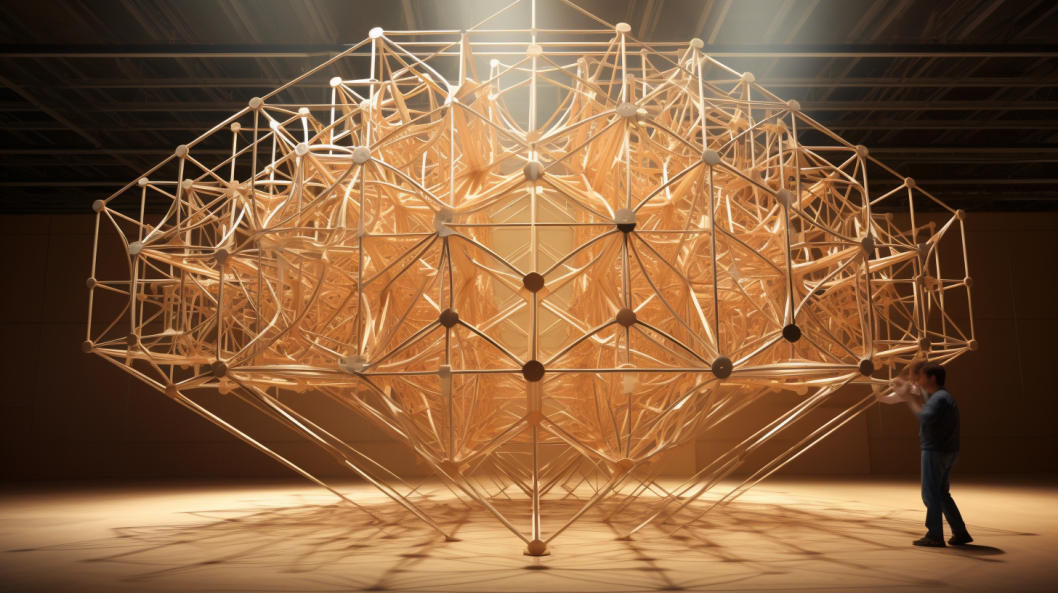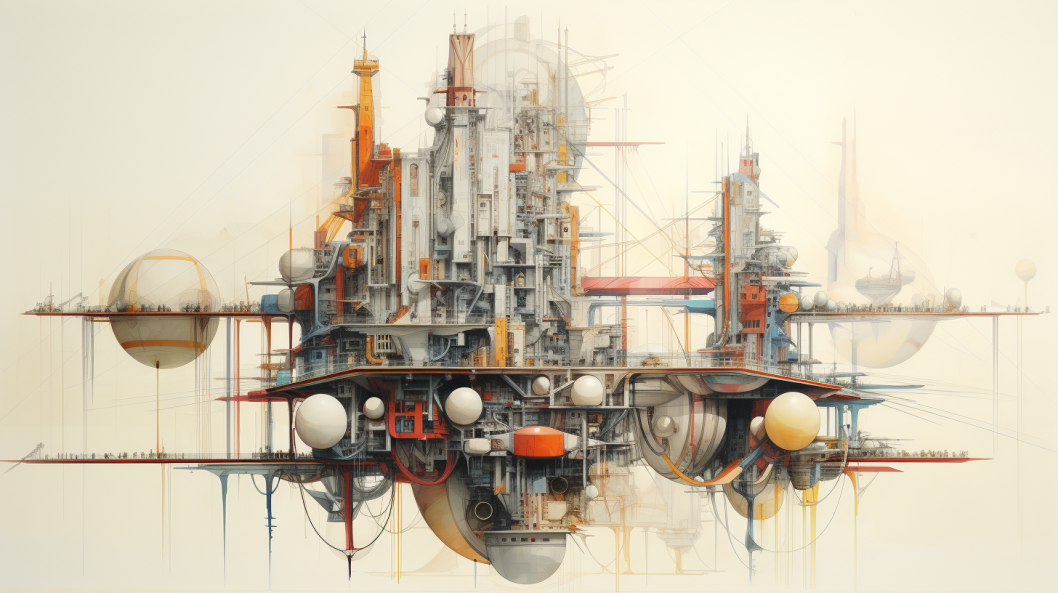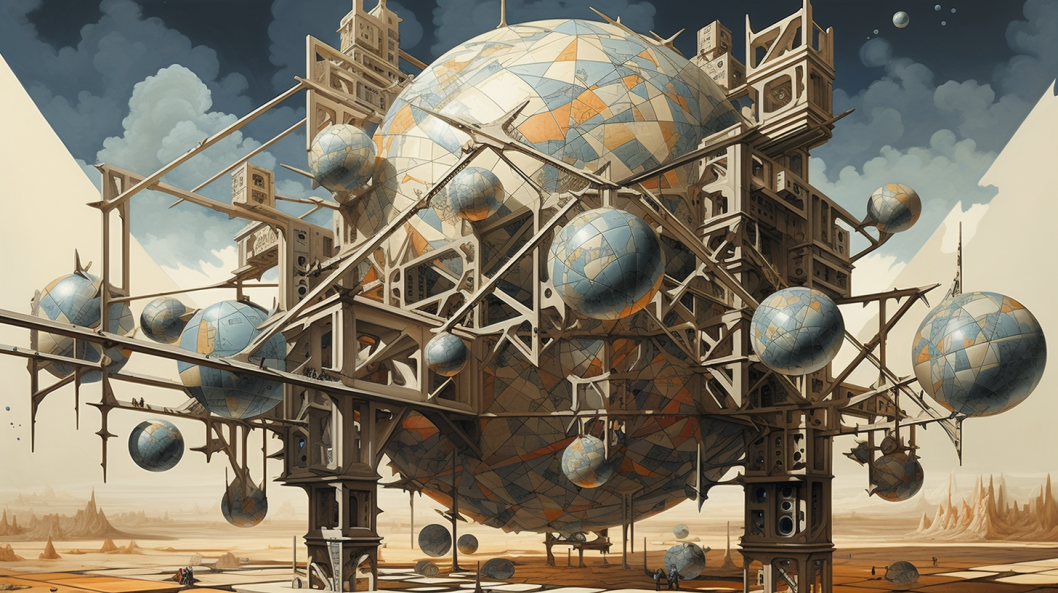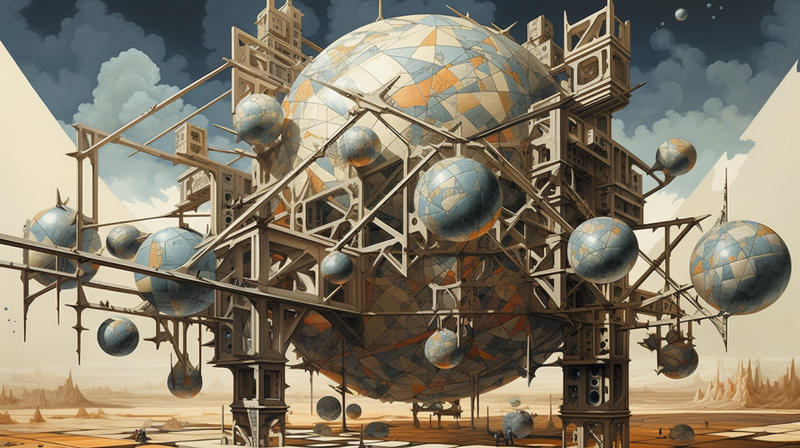Giant Shapes: Amazing Buildings Made with Smart Design
In the continuous story of building and engineering, the beautiful mix of art and science always stands out. Each period shows its unique style through structures that are more than just useful. Today's big buildings, especially those with impressive shapes, clearly show the results of advanced form-finding techniques. These buildings gracefully rise against the sky, starting a new era of beauty and sustainability. They are not only stunning but also highlight the clever engineering hidden within their outward appearance.

How These Giant Shapes Begin
These geometric giants come from combining beautiful design with a deep understanding of shapes, all built into a functional structure. Coming from a place where science and creativity meet, these giants represent the incredible results of engineering, math, technology, and design. They create not just buildings, but lasting symbols of human achievement. The creation of these structures can be traced back to the development of form-finding techniques that help engineers and architects explore and define new spatial possibilities.
Advanced Form-Finding: What It Is
Advanced form-finding is basically an exploration to discover shapes and structures that are best for certain goals. These goals could be using less material, holding more weight, or making the best use of space. Often, this process also unexpectedly leads to new and beautiful designs. These techniques use various mathematical and computer models, such as tensegrity structures (which use tension and compression in a balanced way), minimal surfaces (shapes that have the smallest possible surface area for a given boundary), and dynamic relaxation methods (computer methods to find stable shapes). They guide design ideas towards not only creating strong designs but also uncovering potential geometric and structural wonders.
One important use is in designing structures that rely on tension, where form-finding ensures that forces are spread out perfectly across every tiny bit of the material. The sculpted shapes of these tensile structures, often seen in amazing roofs and bridges, come from complex calculations and repeated computer simulations. These carefully balance stress, tension, and design.

Case Studies: Real-World Wonders
Consider the famous Beijing National Stadium, often called the "Bird's Nest." It's a perfect example of how beauty and precise engineering are woven together. The combination of steel beams, each placed with extreme care, creates not only a stunning visual but also an incredibly strong structure that impresses both engineers and the public.
Similarly, the captivating charm of the Guggenheim Museum in Bilbao isn't just because of its flowing curves and shiny exterior. It's also a testament to advanced geometric modeling and careful structural analysis, resulting in a shape that smoothly moves between being art and being science.
Making Things Sustainable Through Form-Finding
In a time when the call for sustainability is not just important but absolutely necessary, these geometric buildings play a vital role. Advanced form-finding isn't just about finding shapes; it also helps with sustainable development by optimizing material use, reducing waste, and ensuring energy efficiency through clever design. The curvy outer walls and rich surfaces, besides being captivating, also work to use natural light, help with passive cooling, and, as a result, give these amazing structures a smaller carbon footprint.

Challenges and What's Next
Despite exciting advancements, challenges in material science, computer limitations, and economic viability always exist alongside the progress. It's becoming crucial to make these geometric giants not just symbols of wealthy societies, but also accessible and useful buildings for everyone.
Looking to the future, we expect these advanced form-finding techniques to be used more deeply in smart cities, biomimicry (copying nature's designs), and adaptive living spaces. The geometric giants of tomorrow will not only be admired for their dazzling shapes but also for their ability to combine resilience, sustainability, and flowing beauty.

